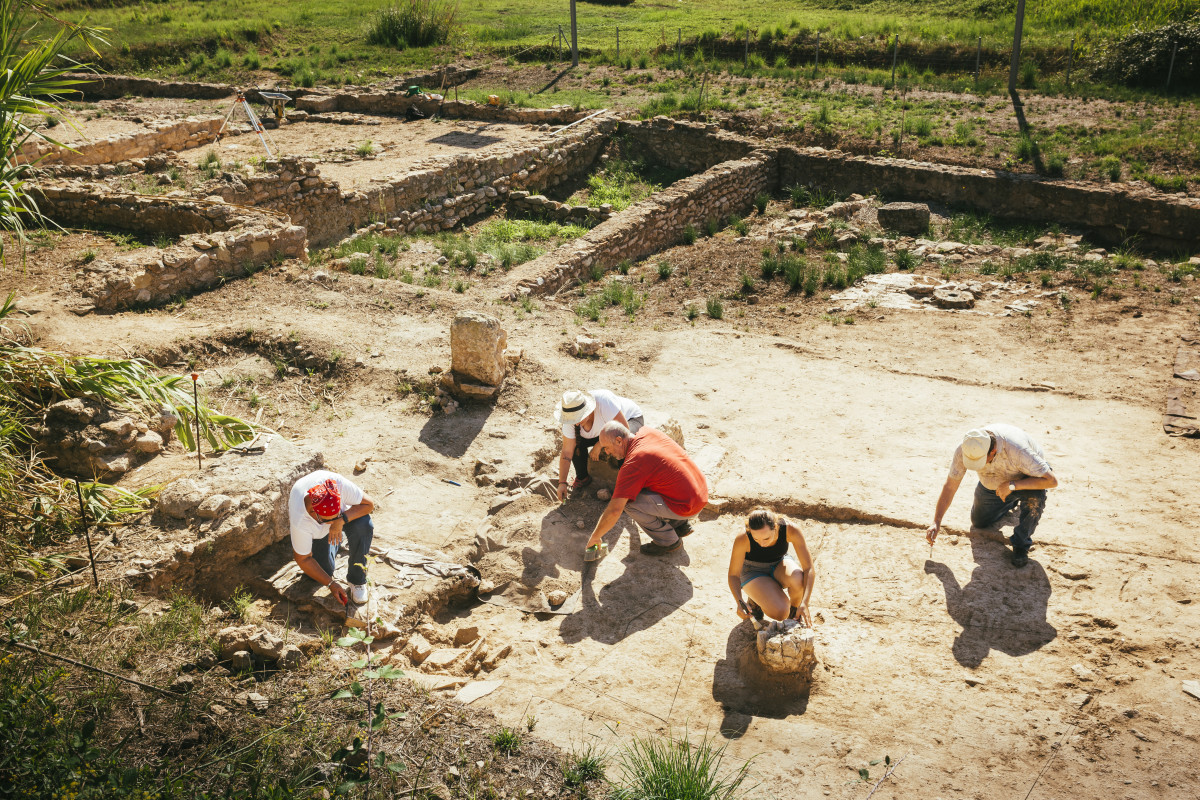1,000-Year-Old Medieval Sword Discovered in Dutch River
Construction workers in the Netherlands stumbled upon an incredible archaeological find—a 1,000-year-old medieval sword—while dredging the Korte Linschoten River in Utrecht. The weapon, now called the “Sword of Linschoten,” dates back to the 11th or 12th century and was remarkably well-preserved thanks to the oxygen-poor clay in which it was buried.

Archaeologists carefully examine the medieval sword. (Credit: Ruben de Heer/RMO)
A Weapon Frozen in Time
The sword measures approximately 3.2 feet long and exhibits features typical of weapons from the High Middle Ages. Experts believe it was forged between 1050 and 1150 A.D., likely in the nearby city of Montfoort. What makes this discovery particularly special is its exceptional preservation, which has allowed archaeologists to study its design and craftsmanship in detail.
“This isn’t just a weapon, it’s a message in iron, preserved by the earth for nearly a millennium,” a spokesperson for Montfoort remarked.
Ceremonial Significance
Interestingly, the sword shows no signs of battle damage or wear from a scabbard, leading researchers to believe it was deliberately placed in the river as a ceremonial offering. During medieval times, weapons were often deposited in water as part of rituals—either to honor fallen warriors or as offerings to deities.
This practice was common across Europe, with many swords, shields, and other artifacts found in rivers and bogs. The Sword of Linschoten may have been part of a funeral rite or a symbolic gesture by a local lord or warrior.
Restoration and Public Display
After its discovery, the sword underwent a meticulous 10-week restoration process to stabilize it after centuries underground. Exposure to air can cause rapid deterioration in ancient metal objects, so conservators worked carefully to ensure its long-term preservation.
Now, the sword is on display at the Museum of Antiquities in Leiden as part of their Acquisitions showcase, where it will remain until August. Visitors can marvel at its intricate design and ponder the hands that once wielded it.
A Glimpse into Medieval Life
Beyond its function as a weapon, the Sword of Linschoten offers insight into the craftsmanship and cultural practices of medieval Europe. Swords were not just tools of war but also symbols of status, honor, and spirituality.
“Its refined craftsmanship and symbolic depth make it not only a historical relic, but also a work of art that reflects the cultural complexity of early medieval Europe,” the Montfoort spokesperson added.
Final Thoughts
Discoveries like the Sword of Linschoten remind us how much history lies hidden beneath our feet—or in this case, beneath the water. This weapon connects us to a time when battles were fought with steel, and rituals held deep spiritual meaning. The fact that it survived so intact is a testament to both medieval craftsmanship and modern archaeological care. Hopefully, further research will reveal more about who owned it and why it was laid to rest in the river. For now, it stands as a silent witness to a bygone era, waiting to share its secrets.









